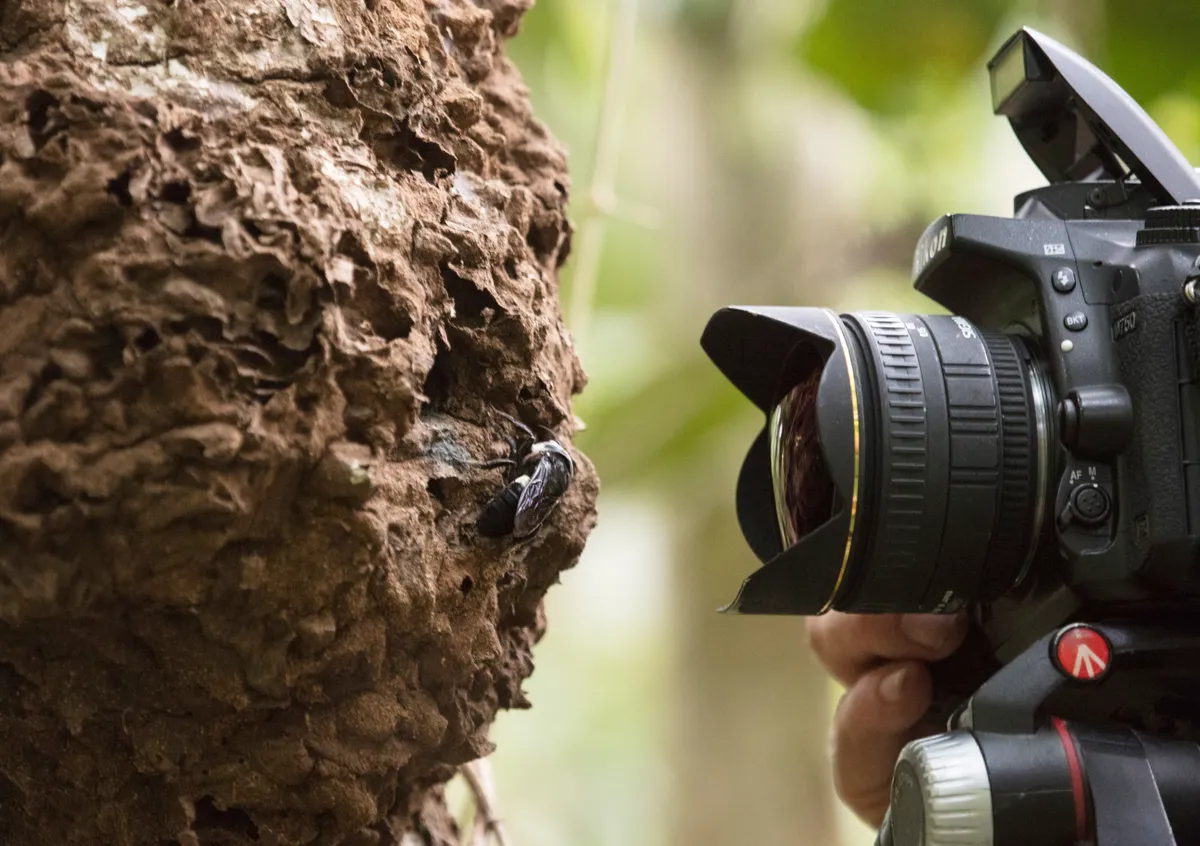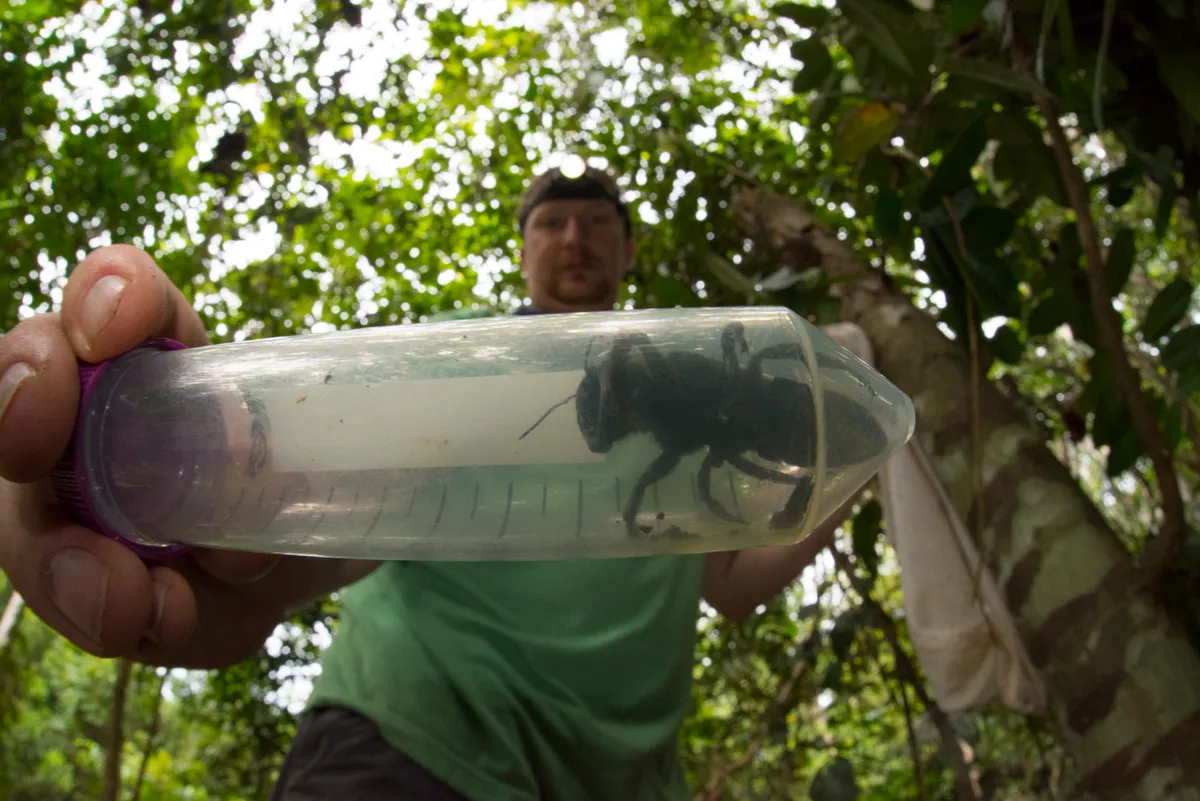Originally described as Megachile pluto in 1958 by Alfred Russell Wallace, and holding the title of the world’s largest bee, the Wallace’s giant bee (named after the renowned British naturalist) was lost to science for 38 years.
However, in 2019 a search team from The Search for Lost Species, a Global Wildlife Conservation (GWC) initiative have now rediscovered the bee in the Indonesian islands of North Moluccas, and photographed and filmed the bee in the wild for the first time.
- How many stings from a honeybee could kill you?
- Does the world's deadliest bee deserve its killer reputation?
“It was absolutely breathtaking to see this ‘flying bulldog’ of an insect that we weren’t sure existed anymore, to have real proof right there in front of us in the wild,” says Clay Bolt, who took the first photos and video of the species alive.

“To actually see how beautiful and big the species is in life, to hear the sound of its giant wings thrumming as it flew past my head, was just incredible. My dream is to now use this rediscovery to elevate this bee to a symbol of conservation in this part of Indonesia, and a point of pride for the locals there,” he adds.
- Bee vs wasp: what's the difference between these two stinging insects?
- This utterly surreal blue bee is like nothing you've ever seen before – unless you're from Australia
Prior to this rediscovery, there are only two published sightings of this species. The original sighting by Wallace in 1858, who described it as “a large black wasp-like insect, with immense jaws like a stag-beetle. Then again in 1981 by entomologist Adam Messer. Searches since 1981 have proved to be unsuccessful until now.
However, National Geographic reports that 20 to 30 of these bees were seen by Rich Desmier de Chenon, a French entomologist, in the 1990s. He was guided to the bees by locals, who were familiar with the species.
One of the bees was collected, but de Chenon didn’t publish his work as he feared this would encourage collectors to find and capture the bee.
In fact, the bee has been sold online with one specimen selling on eBay for $9,100 in 2018.
How big is Wallace’s giant bee?
Wallace’s giant bee can be up to 4.5 cm long with a wingspan of up to 6 cm.
Where does Wallace’s giant bee live?
It lives on the North Moluccas islands, Indonesia
- Meet the deadliest and biggest wasp in the world - complete with its scary 6mm stinger - and learn why it's called the murder hornet
- Why does a bee die after it stings you?
- Bee and wasp stings: what they are, why they hurt and how to treat a sting

The female Wallace’s giant bee is four times as large as the European honeybee worker, and almost twice as large as the male of her species.
Although little is known about the species, the female uses her giant mandibles to collect sticky tree resin to line her nest, which she makes in active arboreal termite mounds. The resin protects the nest from termites.
The team found dozens of termite mounds during the search, but it was only on the last day that a single female Wallace’s giant bee was found, in a nest about 2.4m off the ground.






